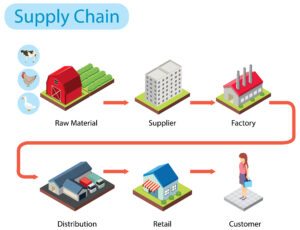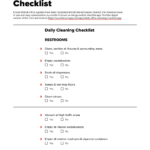INSURANCE
Leveraging On Insurance To Solve Your Immediate, Mid Term, And Long Term Needs.
Leveraging On Insurance To Solve Your Immediate, Mid-Term, And Long Term Needs.
Every individual desires to have an advantage life, but most times they fail to put in the measures in place that will aid them in that quest. To be able to live well and be happy with the kind of legacy being laid down for our loved ones, an individual is expected to ensure that various needs of his or her family are taken care of, without any form of hassle.
From experience and observations, I have seen the difference between the people living an advantage life and some who still live a life of disadvantage – and most times, these people were doing well prior, but unfortunately they neglected some life’s teachings and principles and lived life without abiding to processes.
To be able to enjoy a good standard of living, there are various needs that requires our attention. Without taking care of these needs, an individual may live a very disadvantaged life.
What this goes to say is that, life is full of needs and wants(aspirations); to an individual it might just be to achieve his basic needs such as food, clothing, shelter. To others, it might be to exceed their basic needs, and further achieve some level of Reputation, social class, Respect amongst others- these are form of higher needs.
Many has lived life in tragedy, some had also lived life unfulfilled, dejected, and without much enthusiasm- all because they couldn’t meet-up with their needs and as a result, their loved ones also shared in their disadvantaged life. This would have been avoided if some plans that would have aided them in fulfilling/meeting their needs and wants(aspirations) were put in place – planning for both the positives and the negatives.
This article seeks to address this problem, hence we will be focusing on how we can leverage on insurance to solve our Immediate, Mid Term, and Long Term Needs.
Humans are always on the quest to ensure that their needs are met. The reason we work and sweat so much is because we have things to take care of; especially for ourselves and for our loved ones, and sometimes the people around us. Most of the times, our love for the people we care about is expressed in how we can meet and provide their needs.
Hence, you see people working, or going into businesses just to be able to make sure that their family’s needs are met as well as their goals or dreams.. We call these people “Men at work”(M@W). So let’s look into the various needs that Humans sweats and toil day and night to meet.
The three phases of human needs include the following;
- The Immediate Needs
- The Mid Term Needs
- The Long Term Needs
IMMEDIATE NEEDS: These kinds of needs are mostly what we spend our money on day- in day-out, as well as some impromptu needs that needs to be sorted immediately without having to delay. They represent those needs that require our immediate actions in making sure they are sorted/settled. Prior now, many believed that our immediate needs are; food, shelter and clothing. And this is true. However, do you know that in the event of a premature demise of parent/spouse or any of our Loved ones, “Funeral” becomes an immediate need???
This is reality, yet only few recognised this, and as such plan ahead for it so as not to be at a disadvantage when that happens.
I for once, lost my Father in 2011, and I can boldly tell you that I never thought He could have died even till the year 2030 because he was very young and vibrant. Hence, no plan was put in place to cater for, or absorb the funeral expenses. His death took us by surprise, hence we ran into debt even after exhausting our savings in order to give him a befitting burial. This is why it is important to factor this into our immediate needs. Cause one can never know at what time life may choose to present it’s uncertainties.
THE MID TERM NEEDS: This type of needs implies needs we might need to solve let’s say; quarterly, bi-annually or annually. An example is education goals; be it for our children or for ourselves. You get to settle the cost associated with this either per term, or in sessions. Any other needs that you do not have the responsibility to solve by all means within a month or lesser can as well be grouped into this.
THE LONG-TERM NEEDS; These types of need are needs or goals we wish to achieve in the nearest future. Example includes: our retirement goal, building projects or establishment of a standard company, amongst other long-term project an individual would love to achieve in some years time.
After identifying all these needs as an individual, we automatically switch to actions in trying to put food on the table for our loved ones, we want to give them the best education they could ever have , we want their future to be secure, we want also to achieve some level of social class in the society, we want to be respected, for the feet we’ve achieved, amongst others. Hence we are usually being driven by our needs and wants(aspirations) in life.
We work so hard and put in so much efforts, sweats and toil to be able to meet our needs. But here’s the problem; because we are driven by the purpose of meeting those needs at all cost, we become single minded and focus more on the positives. all we factor in is the positive ways towards achieving our goals only.
Hence we put in so much efforts in saving for tomorrow, making investment, and doing all the necessary things we can do, only in the positive scenarios. We forget that life isn’t a smooth way journey rather; it’s filled with lows and highs.
Now, imagine you’ve worked so hard from months to months, year to year, and your family sees you as the best security they could ever have and hence depended on you greatly because you’ve succeeded in becoming their support for a good number of years. You’ve carried them safely without any shame or lack.
Remembering also that you are not a machine; at sometime , due to your much hardworking and toils, imagine something bad happens to you who is the back bone for your family, and you have to stop being the support on which your family will live and depend on afterwards .
The resulting effect will be very drastic. If they’ve been having a comfortable lifestyle prior then, they automatically fall from that comfortable state to a charity lifestyle – where they will then have to adjust from living on limited options in life to now having no option in life. They now depend on people to render them alms before they can eat or have a shelter over their heads. And most times it is very difficult to adjust from a good lifestyle to this charity lifestyle.
At this point in time, your family won’t remember that you’ve always toiled day and night for them. In fact they will only remember you as being a wicked individual. Someone who didn’t factor in their future needs in the case of unpleasant event.
In the same vein, when an individual who has toiled for so long to save for a goal encounters an unplanned event that drains all of his/her life’s savings and couldn’t achieve his or her dream, the individual automatically loses life’s touch when all their needs or goals seems elusive or abortive due to series of negative life event that might ensue hence causing a halt or bringing to an end their dreams or goals. They become or feel so stagnated in life.
But with an insurance plan, all these could have been avoided or mitigated. Let’s then see how Insurance can help us with achieving our needs.
HOW INSURANCE CAN HELP…
Insurance doesn’t say; hey! have just me!
Remember we’ve established the fact that insurance is a form of plan B in life’s journey. Hence as you are also working and toiling with the goals of being the best security to your family’s wellbeing by making sure that their needs are met (“Men at work”), insurance is saying, while doing and being that, back it up with “Money at work” (insurance) when you can’t work anymore, or when you encounter a huge loss, amongst other negatives that may occur. Let your money then work for you! It’s that simple.
As you are planning for and aiming for positive vibes only, remember that life might present you with some lows (negative vibes). Even when you don’t ask for it, or intend it.
Hence insurance can help you continue making sure that your family needs as well as yours are met, in the event that you are no longer able or absent from life.
I have listed some ways you can leverage on insurance to solve your immediate, mid term and long term needs. They includes;
- For immediate needs that demand your attention impromptu through the loss of a dear one, you can leverage on insurance to help you cater for it without losing your savings or running into debt.
- Also, in the case that an individual encounter a premature death, your family can still have their basic needs met for some years without having to lose their desired standard of living they are used to. Or having to depend on alms from people before those needs are met. This is a form of life insurance.
- For the mid term needs, some plans in insurance focuses on making sure that your child attain his/her desired academic levels in life even if you are there or not. So making plans for this kind of need ahead of time is very key.
- For the long term needs, insurance helps ensure that your long term projects are met. Even in the case of a premature demise, your children can continue your dream of establishing that great company that people will remember your legacy for. Or is it the retirement plans after you are no longer active with work, this form of plan can still come through for you.
CONCLUSION:
In essence, we have established the fact that it is not wise to depend only on your plan A course of action to achieve or meet your needs in life. That it is best to factor in a Plan B alongside. Don’t just be the “man at work” to ensuring that the future of your family are secured, But rather add your “Money at Work” as a backup plan. Knowing that your loved ones can leverage on its fruits to meet their respective immediate, mid term, or long term needs.
However, remember that in order to avoid not having access to your COVER as at when due, it is necessary to ensure that; at the point of subscribing to any form of insurance policy, that you are truthful with all of the informations you will be required to provide, and also make sure that the necessary documents required are kept safe, as this will be needed to make a claim. Don’t be negligent with this, it is one of the reasons most have shy away from this insurance. Kindly read our article on How your cover redemption can be affected (here) for an in-depth knowledge. (Kindly put in the link to the article here).
More from my site
BANKING
The Impact of Supply Chain Disruption on Business Operations and Financial Performance

The Impact of Supply Chain Disruption on Business Operations and Financial Performance
Supply chain disruptions are very commonplace in today’s interconnected global economy, affecting organizations in a variety of industries. These interruptions may have far-reaching effects on a company’s financial performance in addition to its commercial operations. In addition to offering techniques to reduce the risks involved, this article seeks to give readers a thorough grasp of how supply chain interruptions affect corporate operations and financial performance.
MEANING OF SUPPLY CHAIN DISRUPTIONS
Any incident or event that prevents information, services, or items from smoothly flowing through the supply chain network is referred to as a supply chain disruption.
It describes any situation or incident that stops the movement of products, services, or data inside a network of supply chains. These interruptions may happen at any time during the supply chain, from suppliers of raw materials to final consumers, and can lead to disruptions, shortages, higher expenses, and eventually affect the chain’s overall effectiveness and performance.
Disruptions to the supply chain can be divided into two categories: internal disruptions that occur within the company and external interruptions that occur outside the company.
TYPES OF SUPPLY CHAIN DISRUPTION
Disruptions to the supply chain can come from a variety of sources and take many different shapes. Typical forms of supply chain disruptions include the following:
- Natural Disasters: Incidents like hurricanes, floods, tsunamis, and wildfires can cause damage to transportation networks, destroy infrastructure, and force the closure of manufacturing and distribution facilities.
- Geopolitical Events: The movement may be impacted by trade disputes, tariffs, sanctions, war, terrorism, political instability, and changes in governmental policy. moving commodities across international borders, sour commercial ties, and cause bottlenecks in the supply chain.
- Supplier Issues: Delays in the delivery of components or raw materials might result from issues with suppliers, such as bankruptcy or sudden changes in production capacity.
- Transportation Disruptions: The supply chain as a whole may be impacted by delays in the delivery of goods caused by strikes, fuel shortages, accidents, port congestion, and other transportation-related problems.
- Demand Surges or Drops: Unexpected fluctuations in customer demand, such as sudden increases in orders or decreases in sales, can result in mismatches between supply and demand, which can cause delays in manufacturing and delivery.
- Cybersecurity Breach: Information technology system malfunctions, cyberattacks, or data breaches can impair critical data, interrupt the flow of products and services, and offerings.
- Quality Control Issues: Recalls, manufacturing halts, and supply chain interruptions may result from issues with product quality, safety, or compliance.
- Pandemics and Health Crises: Situations like the COVID-19 pandemic can result in worker shortages, manufacturing closures, travel restrictions, and interruptions to international supply chains.
IMPACT ON BUSINESS OPERATIONS
Disruptions to the supply chain can have a big effect on how businesses operate, impacting many different parts of what they do. Among these effects are the following:
- Production Delays: Supply chain disruptions may cause delays in the delivery of components, finished goods, or raw materials, which may cause production to halt or slow down. This may affect a business’s capacity to reach production goals and promptly complete orders from customers.
- Increased Costs: Expenses associated with carrying excess inventory, accelerating shipments, finding alternate suppliers, and putting emergency plans in place can all rise as a result of supply chain interruptions. These extra costs have the potential to weaken profit margins and lower overall financial performance.
- Customer Dissatisfaction: Customers may become dissatisfied and lose faith in the business as a result of delays in the delivery of goods or services. Customer loyalty and the company’s reputation may suffer as a result.
- Inventory Management Problems: Disruptions in the supply chain may result in inventory levels that are out of balance, with an abundance of certain commodities and a deficiency of others. This may result in ineffective inventory management, a lockup in working capital, and higher carrying costs.
- Operational Disruptions: When important vendors or partners in logistics are unable to deliver merchandise services as anticipated, it may cause daily operations of a business to be disrupted, affecting departmental productivity and efficiency.
- Risk of Loss of Market Share: Prolonged supply chain interruptions increase the likelihood that a company may miss out on sales opportunities, lose market share, and experience other negative effects. Those with more dependable supply chains could have an advantage over rivals.
- Legal and Regulatory Issues: When a supply chain is disrupted, there may be legal repercussions, including breaking contracts, missing deadlines, and breaking rules. Legal issues, fines, and reputational harm to a business may arise from this.
- Long-term Business Impact: A company’s financial performance, competitive position, and general viability may all be negatively impacted by protracted or severe supply chain disruptions. It might impair the business’s capacity to sustain connections with clients, vendors, and other business associates.
- Communication and Collaboration Challenges: Interruptions can make it difficult for supply chain participants to coordinate, make decisions, and solve problems. Both efficient crisis management and general operational efficacy may be hampered by this.
IMPACT ON FINANCE PERFORMANCE
A company’s financial performance can be significantly impacted by supply chain disruption in a number of ways, including:
- Increased Expenses: Supply chain interruptions frequently result in greater expenses for items like faster shipment, purchasing from more expensive alternative suppliers, keeping extra inventory on hand, or putting emergency preparations in place. The company’s profitability may be directly impacted by these added expenses.
- Revenue Loss: Supply chain disruptions may cause delays in completing client orders, which may result in a potential loss of revenue because lost chances to close deals. If there are delays or product shortages, customers can also look for other suppliers, which would mean fewer sales for the business.
- Inventory Write-offs: When there are disruptions in the supply chain, inventory levels might become unbalanced, with certain items having excess stock and others lacking. As unsold or outdated inventory builds up and negatively affects the company’s financial condition, this may lead to inventory write-offs.
- Contractual Penalties and Legal Expenses: If supply chain disruptions cause a party to miss contractual obligations, there may be penalties and legal expenses. Conflicts involving partners, suppliers, or customers may lead to legal action and more expenses.
- Long-Term Financial Impact: Extended or severe disruptions to the supply chain may have a long-term effect on the financial performance of the business, limiting its capacity to produce revenue and sustain long-term profitability. Stock performance and investor confidence may potentially be impacted by this.
- Working Capital Restraints: In order to minimize disruptions caused by supply chain disruptions, the business may need to store excess inventory or pay in advance for faster transportation. Money that may have been spent for other company endeavors is diverted by this.
- Business Continuity Costs: In order to avoid or lessen supply chain interruptions, businesses may need to make investments in business continuity and risk management techniques. These costs can have an adverse effect on their bottom line.
- Stock Market Reaction: When businesses see significant interruptions in their supply chains, investors may react negatively, which could lead to a drop in stock prices. The market capitalization of the company could be impacted if investors lose faith in its capacity to handle risks.
- Legal and Regulatory Repercussions: Disruptions to the supply chain may result in legal and regulatory repercussions, such as breaking contracts or neglecting to fulfill duties to customers. A company’s reputation and financial performance can be severely impacted by lawsuits, fines, penalties, and compliance expenses.
STRATEGIES FOR MITIGATION
Businesses can handle supply chain disruption and reduce its impact on operations and financial performance by implementing a number of mitigation techniques, such as:
- Diversify Your Supplier Base: Dependence on only one source might make disruptions more likely. Increasing the variety of suppliers helps lessen the effect of interruptions from a particular source.
- Supply Chain Insight: Put in place systems and technology that offer real-time insight into every aspect of the supply chain, including transportation, production status, and inventory levels. This visibility aids in identifying anticipate possible problems and make proactive mitigation strategies possible.
- Risk Assessment and Management: Perform thorough risk analyses of the supply chain to find possible weak points and put risk management plans in place to lessen their effects.
- Contingency Planning: To handle and minimize supply chain interruptions, create and update backup suppliers, logistics routes, and alternate sourcing choices.
- Cooperation and Communication: Create effective channels for cooperation and communication with consumers, logistical partners, and suppliers. Having solid connections and open channels of communication will make it easier to deal with interruptions in a cooperative and efficient manner.
- Inventory Management: Use agile inventory management techniques to balance supply and demand, keep ideal inventory levels, and lessen the effects of shortages and surpluses brought on by disruptions.
- Adoption of Technology: Invest in Supply chain resilience and agility can be improved by utilizing technology like blockchain, supply chain management systems, and predictive analytics.
- Financial Risk Management: To lessen any financial effects, assess your exposure to financial risk as it relates to supply chain interruptions and take into account risk transfer strategies such supply chain insurance.
- Technology Adoption: Supply chain visibility, traceability, and control can be improved by utilizing cutting-edge technologies like blockchain, data analytics, automation, artificial intelligence, and the Internet of Things (IoT). By facilitating real-time monitoring, predictive analytics, and prompt decision-making, these technologies improve resilience and lessen the effects of disruptions.
- Scenario Planning: Create and maintain scenario plans that take into account a range of possible interruptions and how they can affect financial performance and business operations.
CONCLUSION
Disruptions in the supply chain significantly affect financial results and commercial operations. Companies need to proactively identify risks, improve teamwork, use technology, and create strong contingency plans in order to successfully traverse these issues. Businesses may reduce the effects of disruptions, enhance financial performance, and preserve a competitive edge in the complex and unpredictable business world of today by putting these mitigation techniques into practice.
More from my site
ECONOMY
Vehicle Insurance: Everything You Need To Know

More from my site
INSURANCE
How Much is Car Insurance in Nigeria 2024?
More from my site
-
EDUCATION2 years ago
Jamb Cut-Off Mark for A Law Degree in Nigerian Universities
-
BANKING2 years ago
POLARIS Bank Transfer Code| How to Activate the USSD Banking Code
-
BANKING2 years ago
Union Bank Transfer Code| How to Activate the USSD Banking Code
-
BANKING2 years ago
FIRST Bank Transfer Code| How to Activate the USSD Banking Code
-
BANKING2 years ago
How to Check UBA Account Balance From Anywhere
-
BANKING2 years ago
GT Bank Transfer Code| How to Activate the USSD Banking Code
-
BANKING2 years ago
Check GTB Account Balance via Internet and USSD Code
-
BANKING2 years ago
ZENITH Bank Transfer Code| How to Activate the USSD Banking Code




































